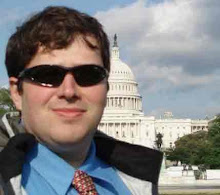
The City of Chicago is all set to launch a cap-and-trade system for carbon emissions. The city is seen to the right, as viewed from a NASA satellite. Image source: NASA.
Both candidates in the presidential election supported a cap and trade system for the nation to reduce carbon emissions. As such it’s likely that we’ll see a national plan developed in the next few years. The city of Chicago is ahead of the game however, having started one in their metro region as reported by this article.
Mayor Richard M. Daley of Chicago on Thursday unveiled perhaps the most aggressive plan of any major American city to reduce heat-trapping gases.
The blueprint would change the city’s building codes to promote energy efficiency. It also calls for installing huge solar panels at municipal properties and building alternative fueling stations.
….
Like hundreds of other cities, Chicago has pledged by 2020 to reduce the emissions of heat-trapping gases 25 percent from the levels in 1990, the baseline established by the Kyoto Protocol, an international climate treaty. Mr. Burke said the Chicago plan offered much more specific ways than other cities’ plans to measure and cut the emissions.
The challenge facing cap and trade programs is implementation. It’s one thing to limit emissions, and a second thing to empower citizens, small businesses and industry to make the changes necessary to achieve emission reductions. For a city to succeed it must develop a multi-faceted plan, addressing private and public transportation, residential energy consumption, commercial energy consumption, government energy consumption, as well as low impact water and sanitation systems. Chicago’s proposal is a comprehensive one, addressing issues from renewable, alternative fuels, to building design and reducing water consumption.
“People think in terms of polar ice caps and rising ocean levels,” Mr. Burke said, “but this takes a look at what would happen to a Midwestern city like Chicago if nothing is done.”
By the end of the century, if no action is taken, he said, Chicago is likely to face 30 more days of 100-degree weather per year, as well as stretches of severe drought.
“The climate of Chicago,” Mr. Burke said, “would resemble what is currently East Texas.”
This was the first time a major American city has produced models to show local effects of global warming, he added.
The mayor argues why he is enacting these changes on a region scale, when climate change is truly a global problem.
“We can’t solve the world’s climate change problem in Chicago,” Mr. Daley said at a news conference at the John G. Shedd Aquarium, “but we can do our part.”
Mayor Bloomberg, who is pushing hard for a third term in spite of recent public referendums supporting term limits, has begun investigation how New York City could handle the effects of climate change, but has not yet proposed a cap and trade for the city. It is likely that he will not be willing or able to do so under the current economic conditions.




No comments:
Post a Comment